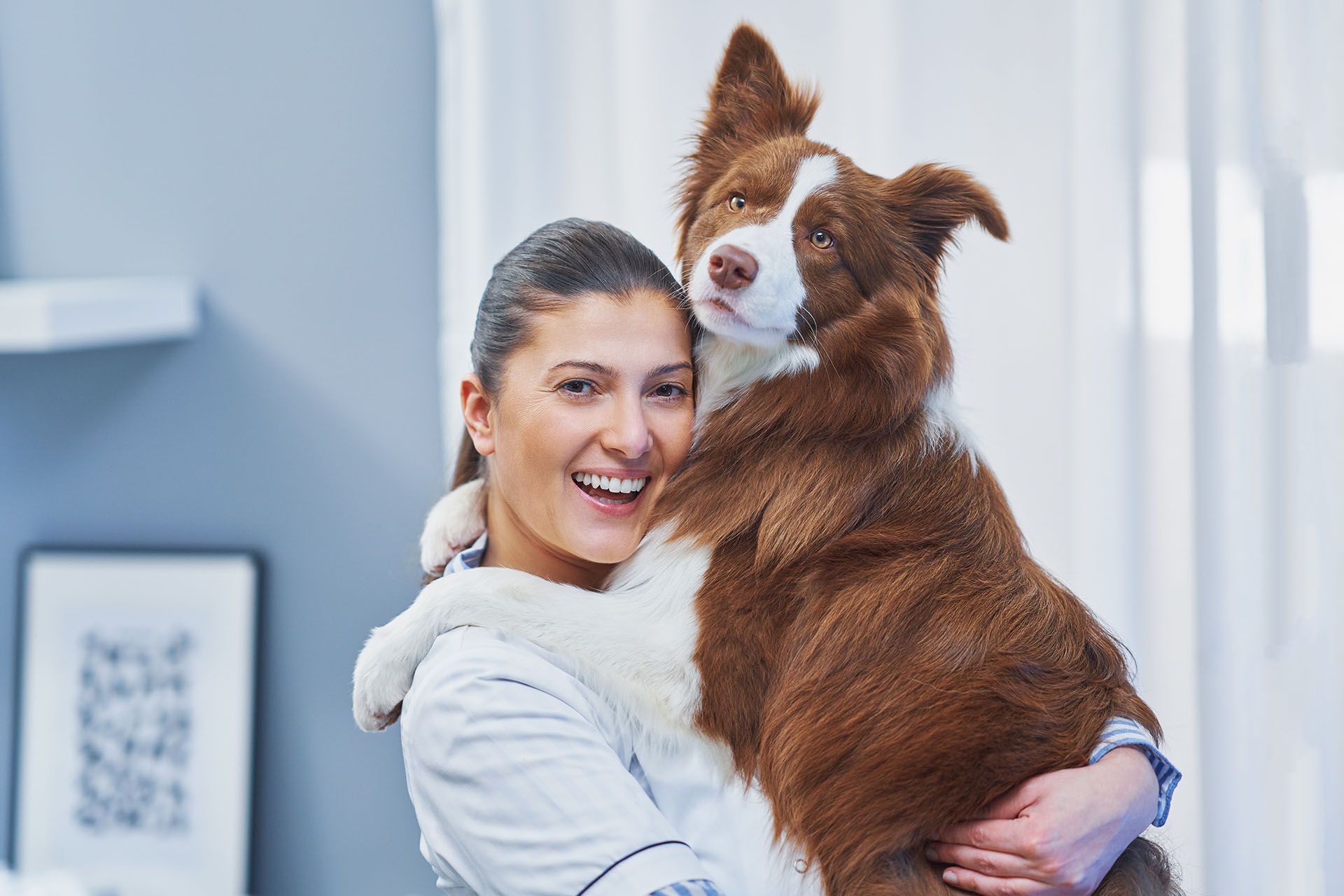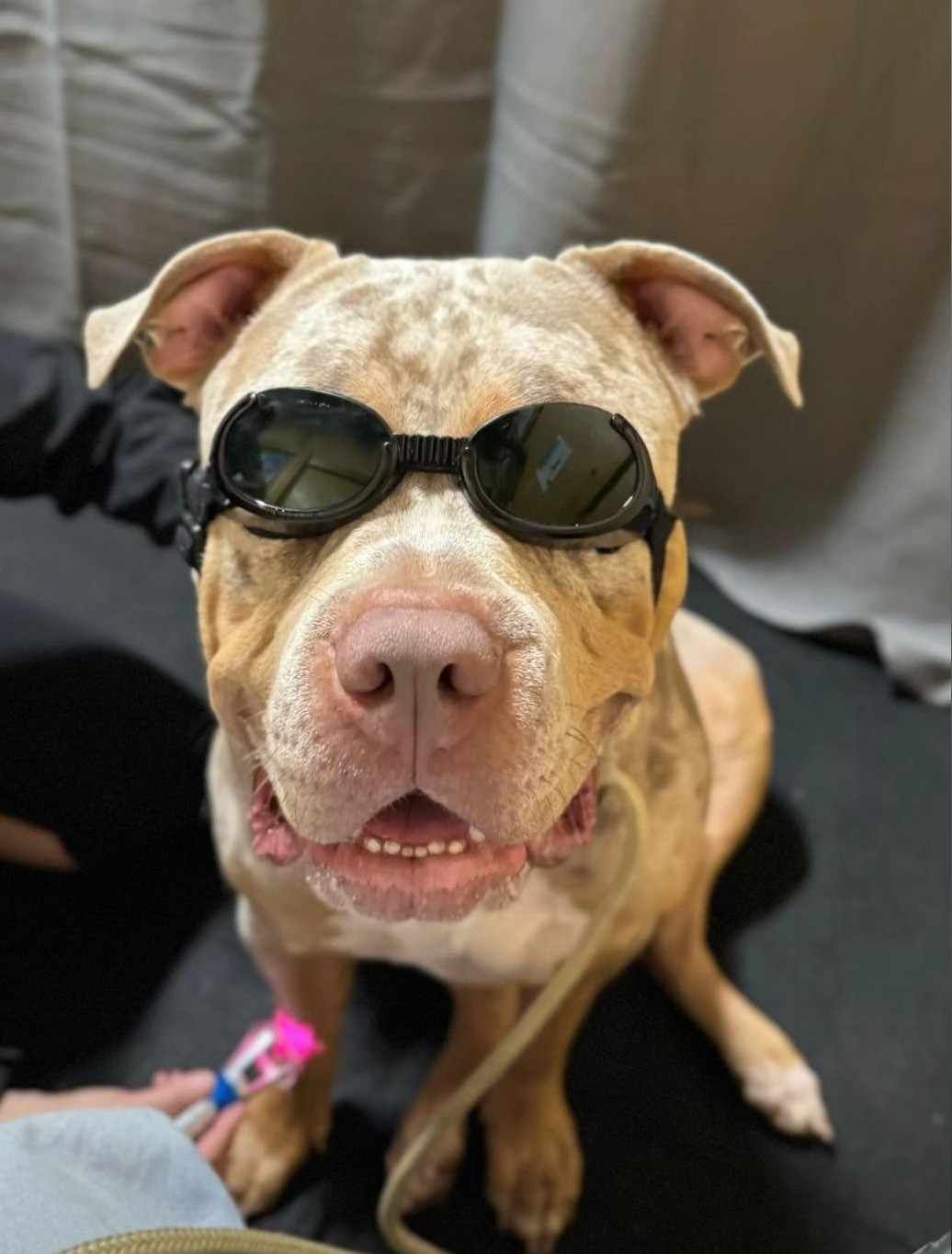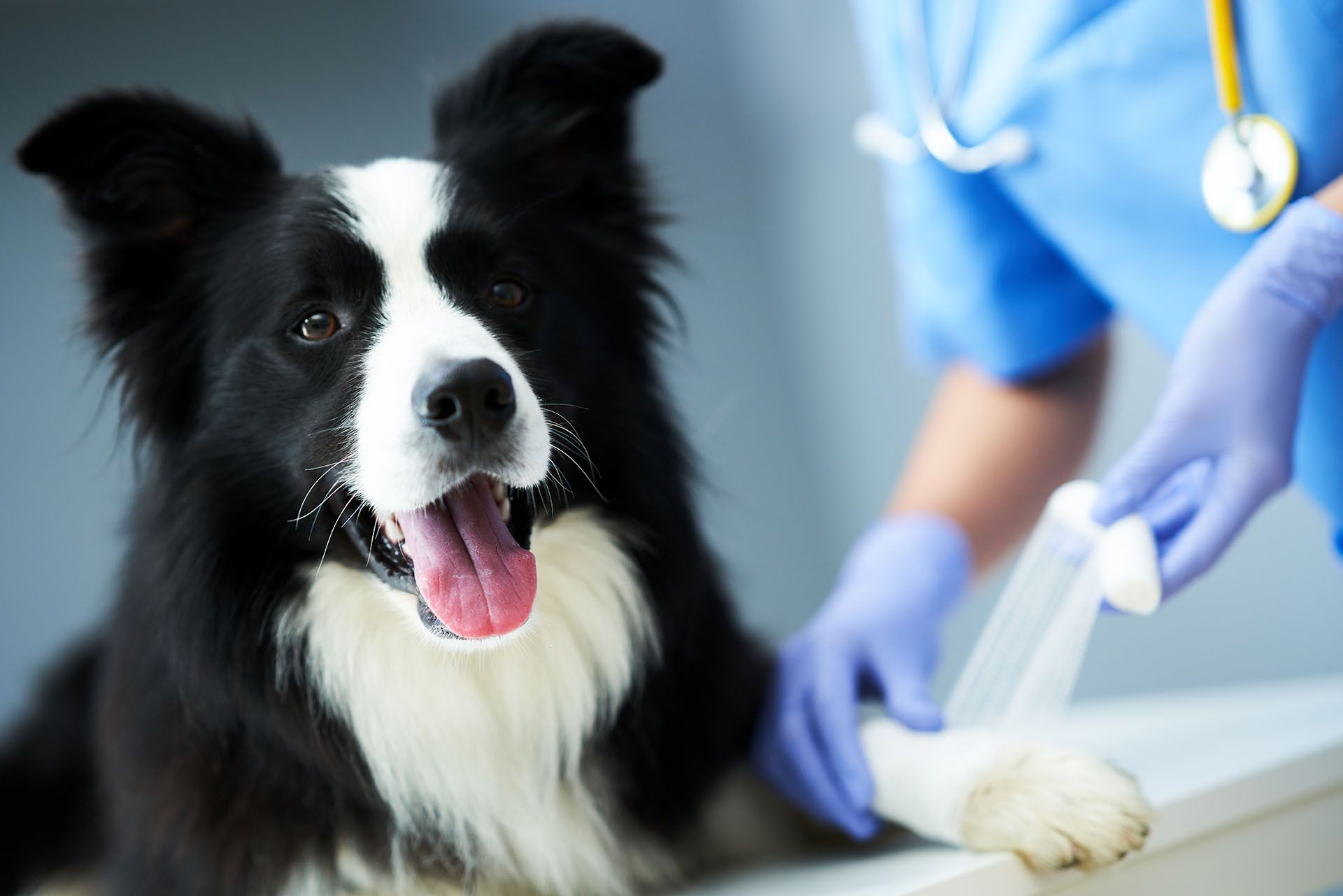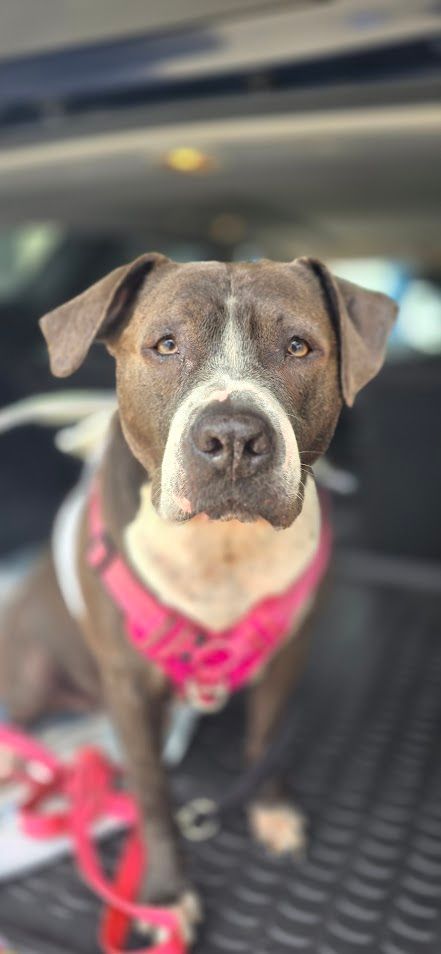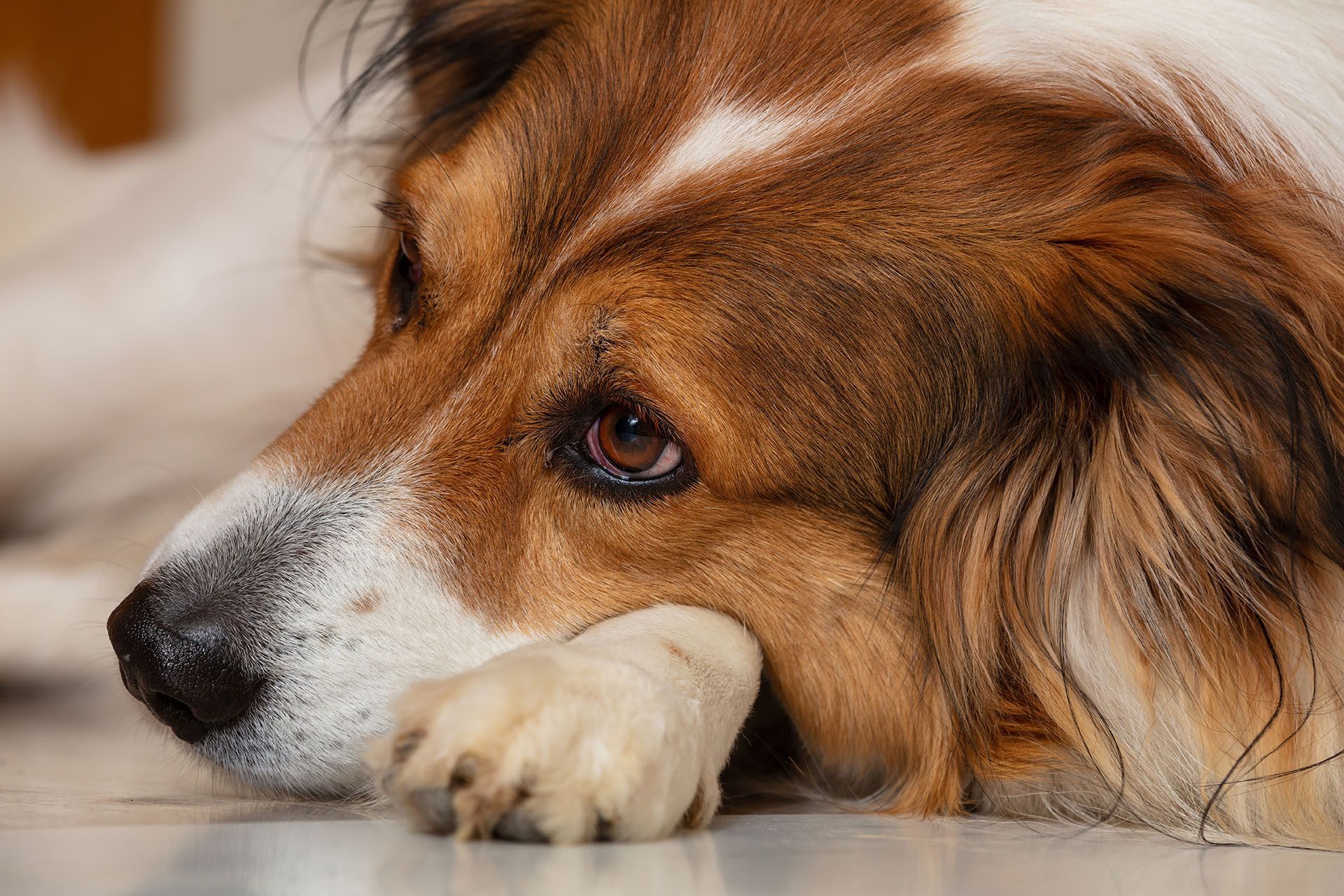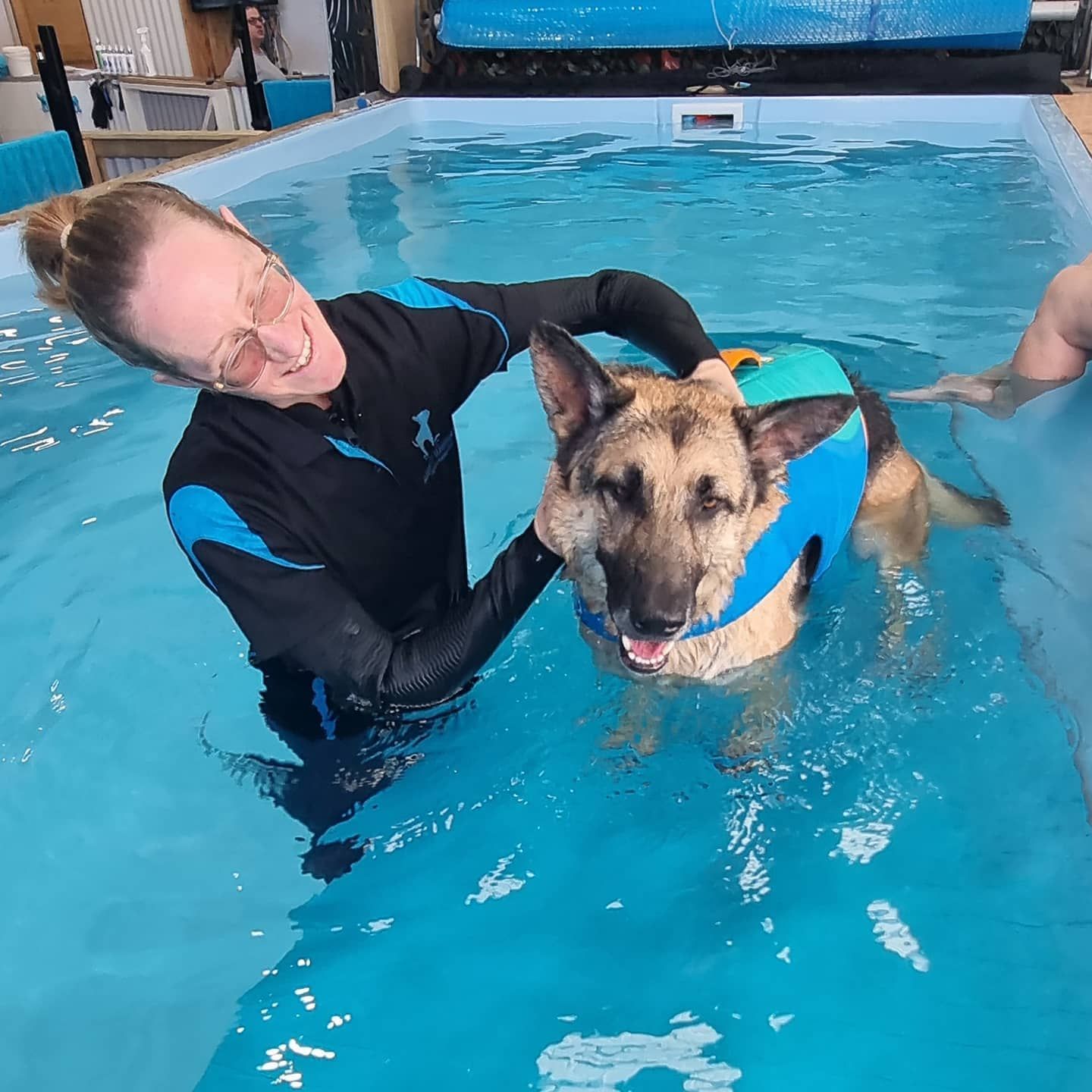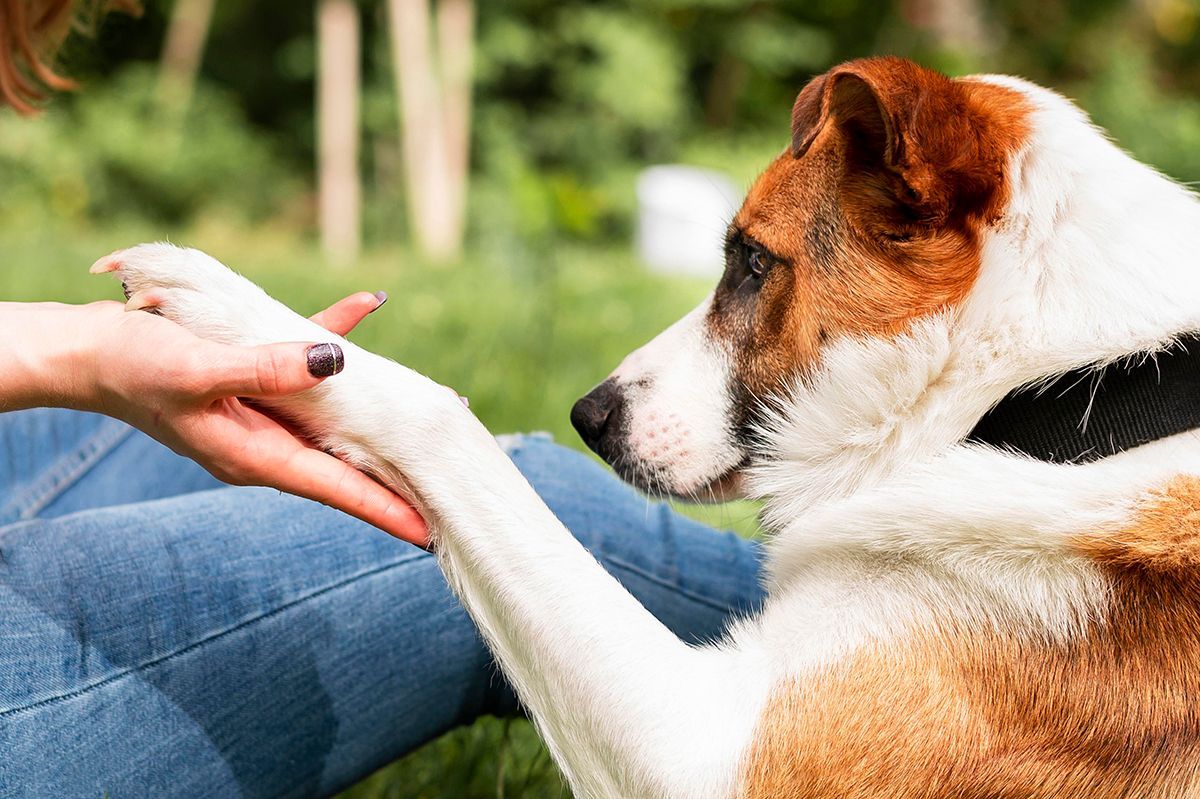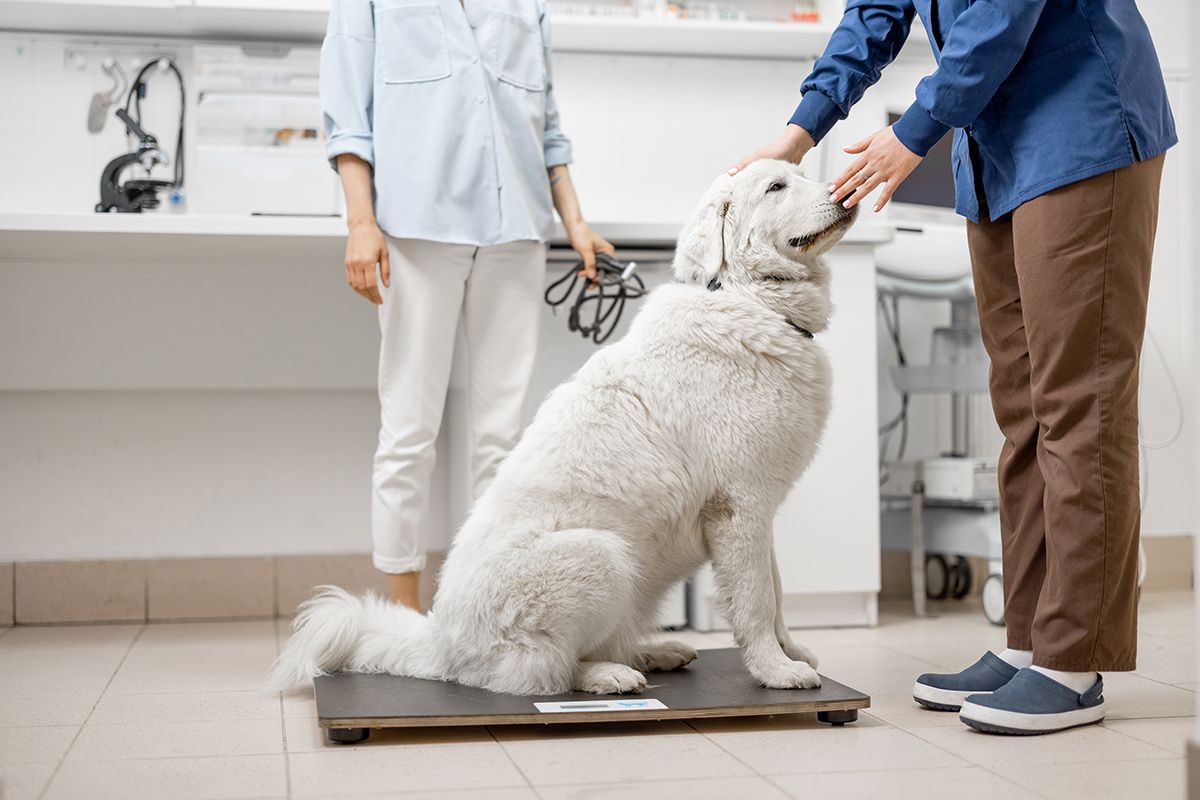Luxating Patella in Dogs: What Is It and How to Help Your Canine?
Have you ever noticed your canine companion limping or favouring one leg while walking? Perhaps you've seen them occasionally skipping a step or lifting their hind leg awkwardly. Or has your beloved furry best friend ever displayed signs of discomfort when trying to jump or play? If you answered yes to any of these questions, your dog is probably suffering from luxating patella.
In this blog post, we will explore what luxating patella is, its common symptoms, available treatments, and look at the benefits of
canine hydrotherapy as a therapeutic approach.

Image by wirestock on Freepik
What is luxating patella in dogs?
A luxating patella in canines, also known as patellar luxation, is a condition where the kneecap (patella) moves out of its normal position within the knee joint. In a healthy dog, the patella sits in a groove at the end of the femur (thigh bone) and slides up and down as the leg bends and straightens. However, in dogs with a luxating patella, the kneecap can move out of this groove, usually towards the inside or outside of the leg, causing pain and discomfort.
Which dog breeds are more prone to developing luxating patella?
Luxating patella can be congenital (present at birth) or acquired later in life due to injury, trauma, or other factors. It is more commonly seen in small and toy breeds of dogs, such as Chihuahuas, Pomeranians, Yorkshire Terriers, and Miniature Poodles, but can also occur in larger breeds.
Are there different grades or levels of severity for this condition?
The severity of a luxating patella can vary, ranging from mild, where the patella can be manually manipulated back into place, to severe, where the patella is constantly out of position and the dog experiences chronic pain and lameness. Clinical signs of a luxating patella may include limping, skipping or hopping on the affected leg, reluctance to bear weight, and swelling or thickening around the knee joint.
What treatment options are available for dogs with luxating patella?
Treatment for a luxating patella depends on the severity of the condition. Mild cases may not require treatment, while more severe cases may require surgical intervention to correct the alignment of the patella and prevent further discomfort and joint damage. Pain management and physical therapy may also be recommended in some cases. Regular veterinary examinations and appropriate exercise and weight management can help prevent or manage a luxating patella in dogs. If you suspect that your dog may have a luxating patella, it is important to consult with a veterinarian for proper diagnosis and treatment recommendations.
What are some tips for managing canine luxating patella at home?
Here are some general home care tips that may help manage a dog with a suspected or diagnosed luxating patella:
Rest
Provide your dog with adequate rest and avoid activities that exacerbate the condition, such as running, jumping, and excessive play. Limit your dog's physical activity and avoid activities that require repetitive bending of the knee joint.
Weight management
Maintaining a healthy weight is important for dogs with a luxating patella, as
excess weight can put additional strain on the affected joint. Work with your veterinarian to determine an appropriate diet and exercise plan for your dog to achieve and maintain a healthy weight.
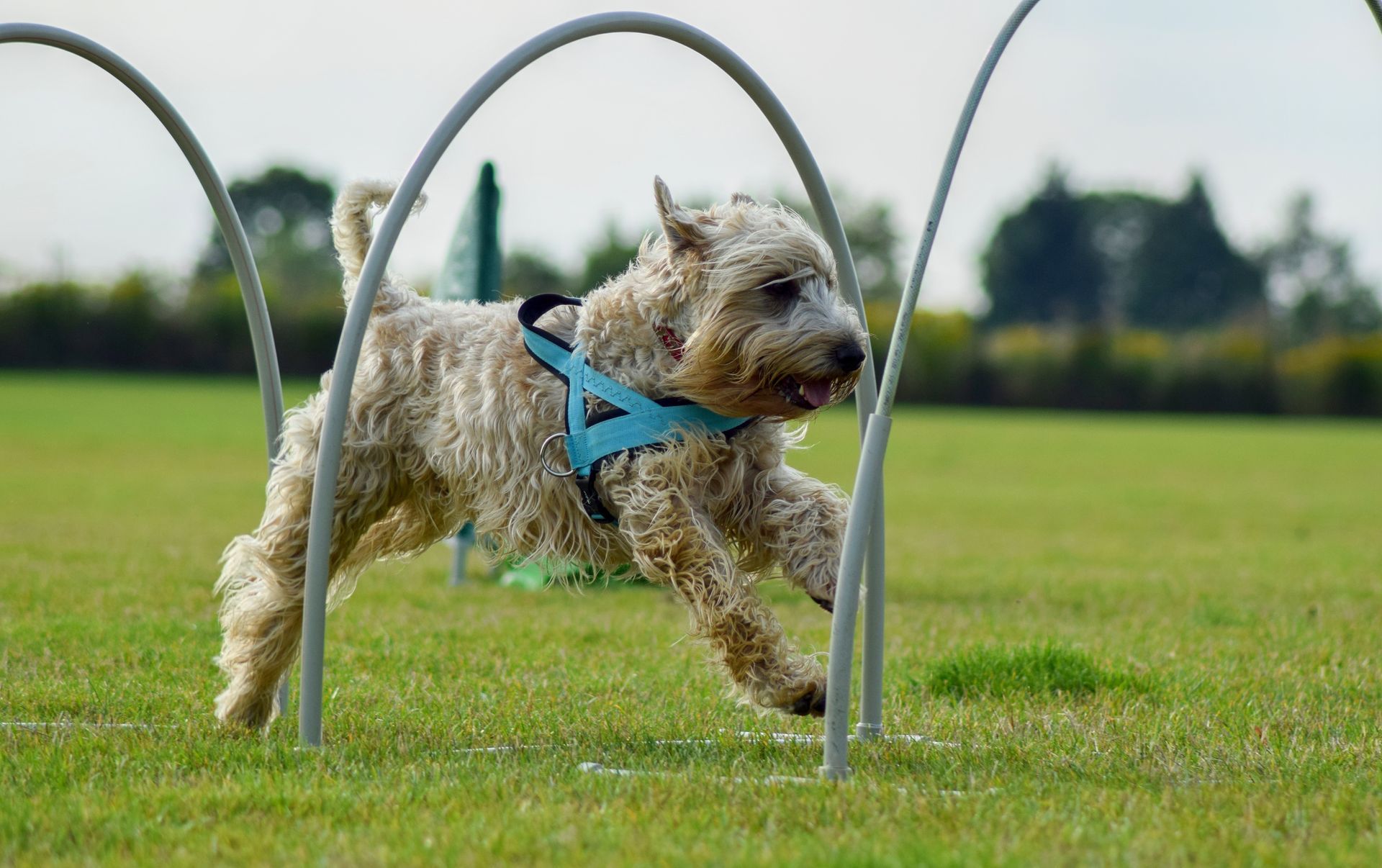
Pain management
If your dog is experiencing pain associated with the luxating patella, your veterinarian may prescribe pain medications or anti-inflammatory drugs. Follow your veterinarian's instructions for dosing and administration.
Environmental modifications
Provide your dog with a soft and comfortable surface to rest on, such as a padded bed or mat, to reduce pressure on the joints. Avoid slippery surfaces that may cause your dog to slip and further injure the affected knee.
Physical therapy
Your veterinarian or a qualified canine rehabilitation therapist may recommend specific exercises or physical therapy techniques to help strengthen the muscles around the knee joint and improve joint stability. Follow their recommendations carefully and avoid any exercises or activities that may worsen the condition.
Regular veterinary check-ups
Schedule regular check-ups with your veterinarian to monitor the progress of your dog's condition and make any necessary adjustments to the treatment plan. t's important to remember that these are general guidelines, and the appropriate home care for a luxating patella may vary depending on the severity of the condition and your dog's specific needs. Always consult with your veterinarian for proper diagnosis, treatment, and management of your dog's luxating patella. Your veterinarian can provide you with personalised recommendations tailored to your dog's condition and overall health.
In addition to these general care tips, exploring specialised therapies such as hydrotherapy can offer significant benefits in managing luxating patella in dogs.
What is hydrotherapy and how can it help manage patella luxation?
Hydrotherapy can be a beneficial form of rehabilitation for dogs with patella luxation, a condition where the kneecap slips out of its normal groove. Hydrotherapy involves the use of water-based exercises for therapeutic purposes, and it can be especially helpful for dogs with joint and mobility issues, including those with patella luxation.
Here are some potential benefits of hydrotherapy for canine patella luxation:
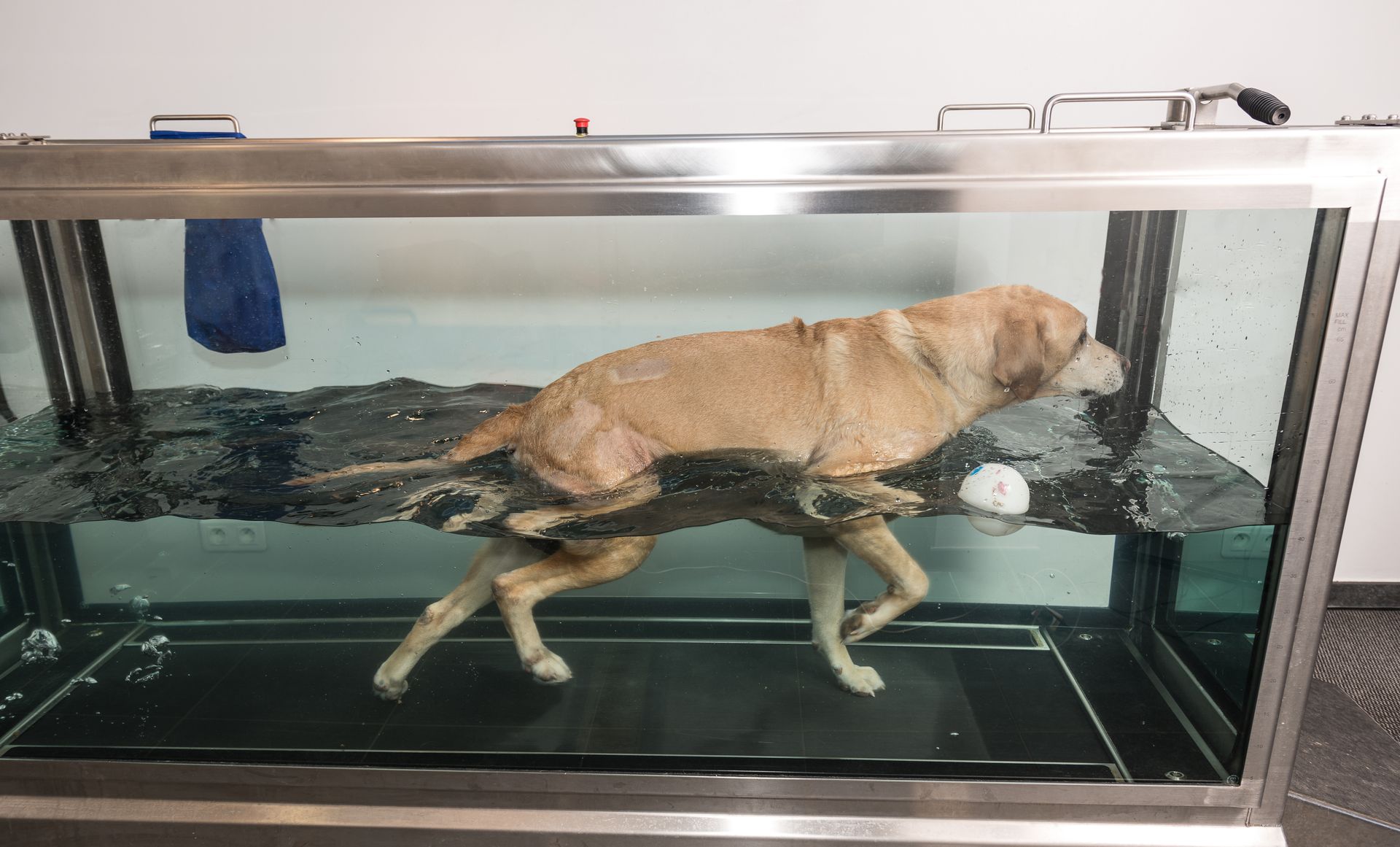
Low impact exercise
Water provides buoyancy, which reduces the impact on joints during exercise. This can be particularly beneficial for dogs with patella luxation, as it allows them to move and exercise without putting excessive strain on their affected knees.
Muscle strengthening
Hydrotherapy can help to strengthen the muscles around the affected knee joint, which can provide additional support and stability to the kneecap. Strong muscles can help to hold the kneecap in its proper place, reducing the risk of further luxations.
Pain relief
Warm water used in hydrotherapy can help to relax muscles, reduce pain and inflammation, and promote circulation, which can all contribute to improved comfort and mobility for dogs with patella luxation.
Range of motion improvement
Hydrotherapy can help to improve the range of motion in the affected knee joint, which can be beneficial for dogs with limited mobility due to patella luxation. The water's resistance can also provide gentle resistance during exercise, helping to improve joint flexibility.
Weight management
Hydrotherapy can be an effective form of exercise for dogs with patella luxation who may have limitations on their ability to engage in high-impact activities. Regular hydrotherapy sessions can help dogs maintain a healthy weight, which is important for managing the condition and reducing strain on the affected knees.
It's important to note that hydrotherapy should always be done under the supervision of a qualified veterinary professional or a certified canine rehabilitation therapist. They can assess your dog's condition and tailor a hydrotherapy program that is safe and effective for your individual dog's needs. Additionally, hydrotherapy should be used as part of a comprehensive treatment plan that may also include other conservative or surgical management options, depending on the severity of the patella luxation. Always consult with your veterinarian for proper diagnosis and treatment recommendations for your dog's specific condition. Overall, hydrotherapy can be a valuable adjunctive therapy for canine patella luxation, but it should be used in combination with other appropriate treatments as determined by your veterinarian.
Takeaway
You should always keep in mind that each dog is unique, which means the approach to managing luxating patella may vary. Whether it's conservative measures, such as weight management, environmental modifications and physical therapy, or more advanced interventions like hydrotherapy, the goal is to alleviate pain, improve mobility, and enhance the overall wellbeing of your canine companion. And if you do choose to pursue hydrotherapy as a form of rehabilitation, you need to make sure that it is carried out by qualified professionals like
Water Walkies to ensure safe and effective treatment.
